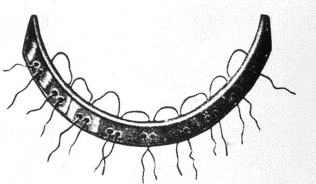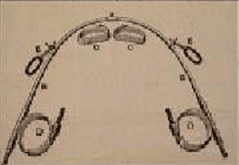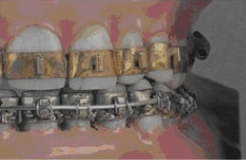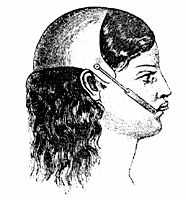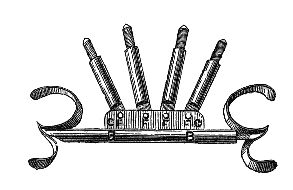Braces can seem like a tough proposition at first. But if you think that you might have it rough, take a look at some of these appliances used down the ages to straighten teeth, correct bites and improve smiles. They might even scare your teeth straight.
We’ll start as far back as the precursors to the Romans. The Etruscans used gold wire (and there is archeological evidence to back it up) as ligatures to keep teeth in place and maintain the spaces.
The Fauchard Bandeau
Developed by ex-Navy surgeon-turned-dentist, Pierre Fauchard, this prototype arch expansion device was a horseshoe-shaped strip made of precious metals (gold ordinarily), which was then ligated (attached or tied off) to the teeth. It may not look like this anymore, but its principles remain the basis for helping with crowding.
Dr. Angle, considered one of the fathers of modern orthodontics, fashioned this set of braces. It was his original fixed appliance, wherein gold alloy strips were “pinched” and then soldered together to form orthodontic bands.
Used in the late 1920s, here is a look at set of full banded braces. The top is made out of gold while the bottom out of metal. Not quite the horseshoe of yore and definitely getting closer to today’s braces, however, you would probably not be one of those smiling in the yearbook picture.
So here’s an appliance that didn’t make the cut. It’s was used in the mid-1860s to ratchet up the traction by using a skull cap that was attached by elastic straps to gold frame that was fitted around the incisors.
Then there is this beauty. Intended to correct a crossbite, this particular device was “fashionable” around in the late 1850s. The adjustable bar (on the bottom of this rendering) was opened incrementally to expand the palate while the screws were used to move the incisors.
As you can see, the variety of cutting-edge appliances and treatments available at Orthodontic Associates are a far cry from what they once were. Contact one of our friendly staff to see how our experienced doctors can help you to get your healthy smile at any of our nine convenient Baltimore locations.



